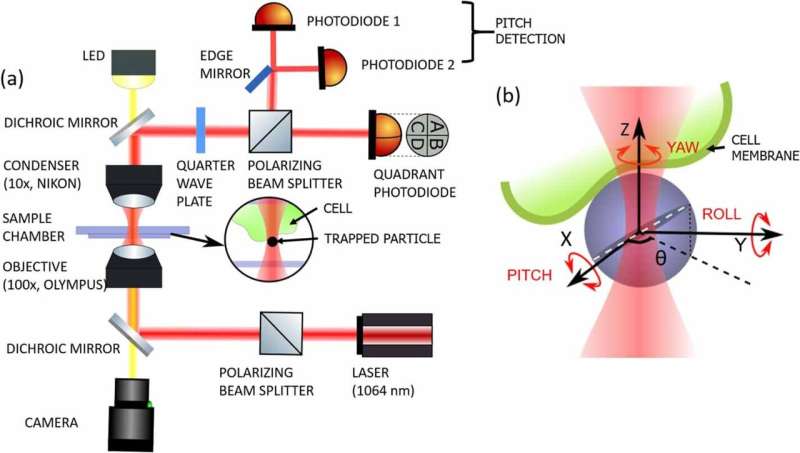This article has been reviewed according to Science X's editorial process and policies. Editors have highlighted the following attributes while ensuring the content's credibility:
fact-checked
peer-reviewed publication
trusted source
proofread
Q&A: Developing a tool to identify cancerous cells from their membranes

Dr. Basudev Roy, Associate Professor in the Department of Physics at the Indian Institute of Technology, Madras, has recently published a paper about cell membrane fluctuations and their use for diagnosing cancerous diseases in the journal Physical Biology.
This interview is part of a campaign for Open Access Week 2023 that explores the benefits of the fee discounts and waivers on offer when publishing open access with IOPP.
Tell us about your research.
In my team, we work with biophysical tools to study cellular biological problems. We have developed a method to determine the properties of cell membranes which is particularly exciting as it could help in cancer research. Cancerous cells are known to be softer than healthy cells and our method can be used to diagnose such diseases. It also allows us to study how particular drugs affect cell membranes and whether diseases can be cured with specific drugs.
How did you develop this method?
In our study we first estimated how membrane fluctuations behave in different circumstances. We then went on to study these membranes experimentally to establish the cell membrane parameters, particularly the bending rigidity. We then applied a drug called latrunculin-B to find how the membrane softens and studied how they responded to slope fluctuations. This method of determining the bending rigidity of a cell membrane provides greater accuracy than monitoring conventional "normal" fluctuations.
What have been the highlights and challenges of your research work?
In my opinion, the greatest highlight of our work is the potential to positively impact important problems in medical research like the effect of diseases on cells and which specific drugs can address these diseases.
Accurate determination of the parameters of the cell is an important and complex challenge. Many of the techniques currently used are not yet accurate enough to effectively constrain these parameters.
Your research was published open access, what made you decide to do so?
Our research is funded by the alliance between the Wellcome Trust, and the Department of Biotechnology in India. According to the mandates of the Alliance, research outputs from these funds are required to be published in an open access format. This is why we published our study open access.
We also strongly support open access as publishing research openly allows people from underprivileged communities to access and benefit from the work.
We offer a range of discounts and waivers to help authors with the costs of open access publishing. How did this make a difference when publishing your work?
I have published with IOPP extensively throughout my career. I have used the range of discounts and waivers on offer to publish my work open access ensuring it reaches the widest possible audience and is published in a format that complies with the mandates of my funding body.
What benefits have you seen so far from publishing your work open access?
Publishing open access allows people from a wider audience to access my work, including those from underprivileged communities. This leads to better dissemination and visibility for the work.
More information: Srestha Roy et al, Comparison of thermal and athermal dynamics of the cell membrane slope fluctuations in the presence and absence of Latrunculin-B, Physical Biology (2023). DOI: 10.1088/1478-3975/accef1
Journal information: Physical Biology
Provided by IOP Publishing




















